
Transcription
Date: 3/25/2020 4:09:30 PM
Subject: Update from upstate
Where do I begin? Yes! Where 2 start is a work in progress. The battle of being a writer. Know where the story ends n how it does, but the beginning: where 2 launch introductory words, is ever ongoing...
The cure?
I'll just talk
Which being blessed with a tablet allows me 2 do. Thank god my youngest brother blessed me with it. Definitely more quiet than my type writer which been outta commission 4 like 2 years now. Only lug it around cause cost of postage. Cost me $11.80 2 send 2 pillows an hat weighing a total of 3 pounds 2 Houston Tx. Praying it was an error n that I'll get a refund!
So it's in my heart 2 speak on the pandemic of the Corona virus.
Like out there it has effected in here. No visitors family or otherwise, only exception is attorney visit! No church services. No groups. No school. Recreation has been limited. One unit at a time n all u can do is lift weights! No basketball whatsoever can't even shoot around. At chow only 3 units at a time n there has 2 b 2 rows of tables between us. If not it's 2 2 a table sitting on the side furthest from the other unit. More sings "please wash ur hands" had a janiotrs meeting now they gotta clean everyday 4 real this time! No half stepping! So walls r washed windows door handles etc.
Also cause of no visits we get 2 free phone calls a week! So now cause the 56 dudes/mainly kids! Literally running n fighting 4 the 3 phones available (sometimes 5) so haven't been able 2 call moms though I try 2 every Sunday! Today's Wednesday!
NE who bout Corona
I'm not 2 much worried
I know it's real don't get me wrong
Just all I can do is pray
"Jesus u r my immune system.IF the virus attack me u can heal me n get glory from the press conference amen. IF I don't get sick u get the glory from a life lived 4 u that will acknowledge that u the reason I escaped the valley of the shadow of death. Amen"
Meanwhile my heart n soul r at peace, sure it has something 2 do with my faith in God n his holy word.
Matthew 24:6-8
Here Jesus speaks on the future. Bout wars rumors of wars, famines, n pestilences .,. He refers 2 these as "the beginning of sorrows"
Later in Matthew 24:36-39
Jesus Christ spoke on how in the end of time people will b partying n kicking it loving love nsome mait
iaged. 3 I n just focused on earthly eternity.
Right now we r all on quarantine! N nobody's kicking it, living it up, celebrating, getting married etc.
That being the case I know in my heart that things gone get better! Amen.
Not smart enuff 2 know when but I know it will cause the Bible clearly talks bout how life will b in the end. So I know life gone pick up n return 2 "normal" pretty soon here cause when Jesus come back life gone b filled with hustle n bustle. Times square gone b filled so 2 Hollywood n Daytona beach etc. Yes billions of souls will be focused on the here n now not eternity or Jesus return when the last day of the earth comes 2 pass!
Oh yeah we in here do got tissue! Blessed with 2 rolls that we have 2 ration from Sunday 2 Sunday!
Freedom
Though some st8's n countries have released thousands or hundreds of prisoners, Wisconsin not on that. Just no new prisoners allowed in 2 the prison. N those those were in county jail 4 court were quarantined upon their return.
But life gets better
3 out of 4 people who went 2 parole got blessed with PPI'S That's short 4 PRE PAROLE INVESTIGATION! that's a sign that u bout 2 be released! See b4 ur granted release on parole they investigate ur living situation primarily n ur release plans, like where u gone work, go 2 school... Amen
One guy got a deferment (defer,) 4 8 months one 4 7 months, n one 4 6 months (which I'm praying 4) so barring incident all those men will b home by Christmas! 4 others go, 2 parole later 2day 3 I know personally. Praying they catch PPI'S
One guy got like 30 years in. found out one guy got let go after doing 27 yrs off 60 yrs! 4 2 homicides n 4 almost killing a third! Mother guy who related 2 my lilsister got let go just months ago after serving 26 off 79 yrs! Him n 2 others killed a guy during a drug deal. Remember reading bout it in the paper! Did't think they'd ever get out!
Now what r the odds I did an almost familiar crime n got an almost similar sentence! 75 yrs of which I've done 23 yrs! Mind u I didn't kill anyone! So logically I think I also should get 2 go home! When I go 2 parole in a couple weeks. April something!
Won't find out till April 1st! Hope it's the first week but could b the last
Either way
Gods will b done
Pray 4 my heart
Can't take much more prison
Need 2 b round love
Sick of being round noise, chaos, violence, list, adultery, thieves, foolishness, wickedness, evil, close living quarters arguing, fighting, yelling, screaming, competing 4 everything like phone shower, toilets! bunk beds etc. vulgarity, bullying, petty hustle, philosophy of the game, hood politics, banging, filth, lack of sleep, lack of respec n the like...
Well 4 all the pain in my life I know 2 day shall b great n I shall do great things in the hours contained in it
Amen
Respectively
MRF
Other posts by this author
|
2021 apr 24
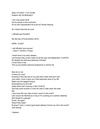
|
2021 apr 21
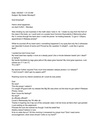
|
2021 apr 7
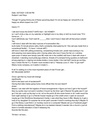
|
2021 mar 20
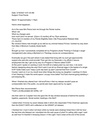
|
2021 mar 25
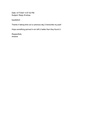
|
2021 mar 24
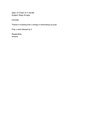
|
More... |
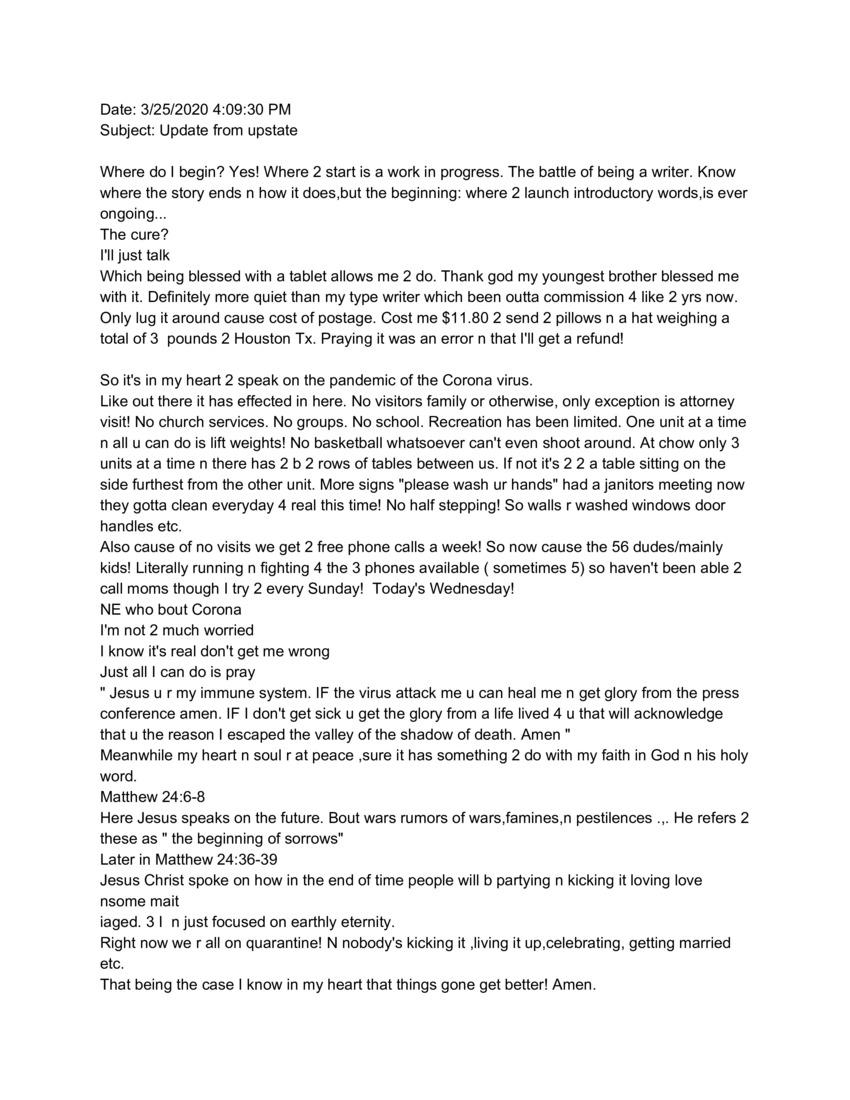
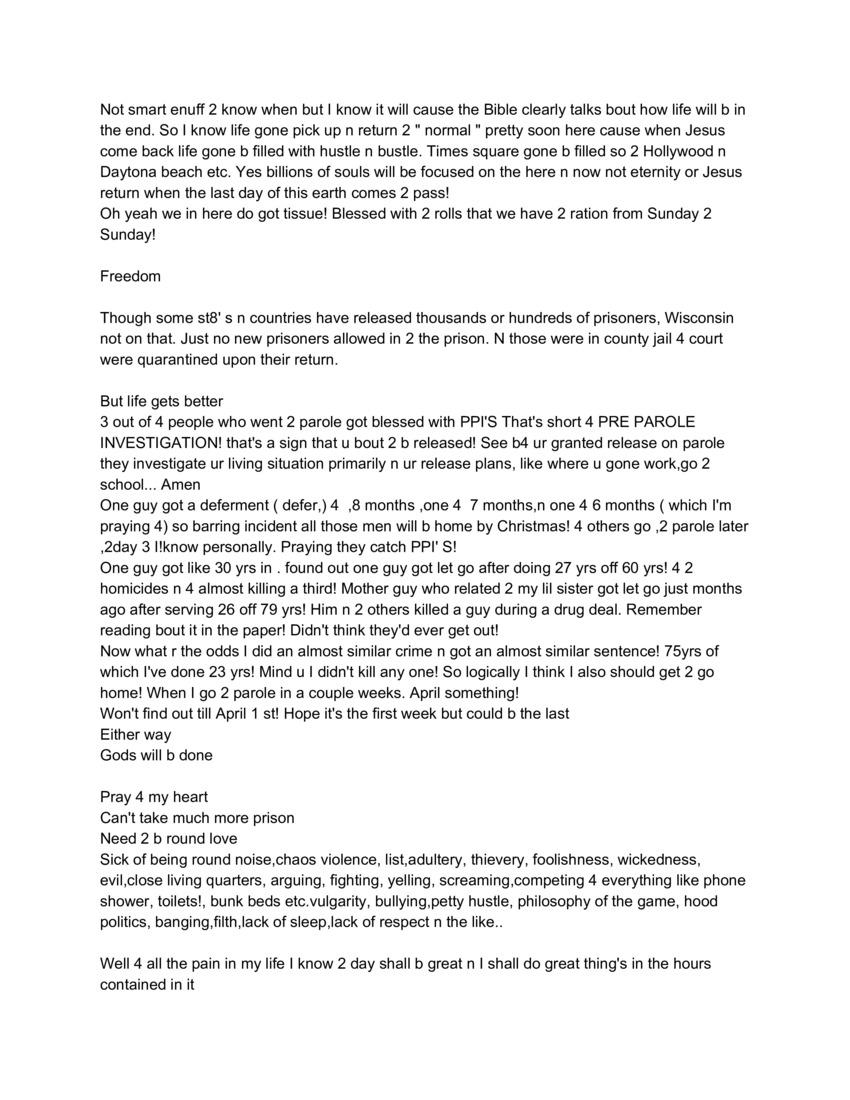


Replies (12)
I am glad to read there are no church services anymore, just read an article about how events with singing (and shouting) were superspreads, like church services, carneval, demonstrations and sport events... I hope you are doing okay and that you are healthy, and can find the patience while seeing others being released... I wish for you that your day is coming soon!
I am fine, healthy, staying mostly inside at home. We do not have a very strict lockdown, most shops are still open, we have to keep distance from each other, but luckily, no military parading the street or shit like that like in other countries. At the same time, death rate is quite high here, relatively, and lots of especially old people in care homes are not good protected and die.
Take care, warm greetings, Julia
good to hear from you! Just send you snail mail this week.
I did look up Raynauds syndrome and copy some information here:
Raynaud's (ray-NOHZ) disease causes some areas of your body — such as your fingers and toes — to feel numb and cold in response to cold temperatures or stress. In Raynaud's disease, smaller arteries that supply blood to your skin narrow, limiting blood circulation to affected areas (vasospasm).
Women are more likely than men to have Raynaud's disease, also known as Raynaud or Raynaud's phenomenon or syndrome. It appears to be more common in people who live in colder climates.
Treatment of Raynaud's disease depends on its severity and whether you have other health conditions. For most people, Raynaud's disease isn't disabling, but it can affect your quality of life.
Symptoms
Hands affected by Raynaud's disease
Raynaud's disease Open pop-up dialog box
Signs and symptoms of Raynaud's disease include:
Cold fingers or toes
Color changes in your skin in response to cold or stress
Numb, prickly feeling or stinging pain upon warming or stress relief
During an attack of Raynaud's, affected areas of your skin usually first turn white. Then, they often turn blue and feel cold and numb. As you warm and circulation improves, the affected areas may turn red, throb, tingle or swell.
Although Raynaud's most commonly affects your fingers and toes, it can also affect other areas of your body, such as your nose, lips, ears and even nipples. After warming, it can take 15 minutes for normal blood flow to return to the area.
When to see a doctor
See your doctor right away if you have a history of severe Raynaud's and develop a sore or infection in one of your affected fingers or toes.
Causes
Doctors don't completely understand the cause of Raynaud's attacks, but blood vessels in the hands and feet appear to overreact to cold temperatures or stress.
Blood vessels in spasm
With Raynaud's, arteries to your fingers and toes go into vasospasm when exposed to cold or stress, narrowing your vessels and temporarily limiting blood supply. Over time, these small arteries can thicken slightly, further limiting blood flow.
Cold temperatures are most likely to trigger an attack. Exposure to cold, such as putting your hands in cold water, taking something from a freezer or being in cold air, is the most likely trigger. For some people, emotional stress can trigger an episode.
Primary vs. secondary Raynaud's
There are two main types of the condition.
Primary Raynaud's. Also called Raynaud's disease, this most common form isn't the result of an associated medical condition. It can be so mild that many people with primary Raynaud's don't seek treatment. And it can resolve on its own.
Signs and symptoms of secondary Raynaud's usually appear around age 40, later than they do for primary Raynaud's.
Causes of secondary Raynaud's include:
Connective tissue diseases. Most people who have a rare disease that leads to hardening and scarring of the skin (scleroderma) have Raynaud's. Other diseases that increase the risk of Raynaud's include lupus, rheumatoid arthritis and Sjogren's syndrome.
Diseases of the arteries. These include a buildup of plaques in blood vessels that feed the heart (atherosclerosis), a disorder in which the blood vessels of the hands and feet become inflamed (Buerger's disease), and a type of high blood pressure that affects the arteries of the lungs (primary pulmonary hypertension).
Carpal tunnel syndrome. This condition involves pressure on a major nerve to your hand, producing numbness and pain in the hand that can make the hand more susceptible to cold temperatures.
Repetitive action or vibration. Typing, playing piano or doing similar movements for long periods and operating vibrating tools, such as jackhammers, can lead to overuse injuries.
Smoking. Smoking constricts blood vessels.
Injuries to the hands or feet. These include wrist fracture, surgery or frostbite.
Certain medications. These include beta blockers, used to treat high blood pressure; migraine medications that contain ergotamine or sumatriptan; attention-deficit/hyperactivity disorder medications; certain chemotherapy agents; and drugs that cause blood vessels to narrow, such as some over-the-counter cold medications.
Risk factors
Risk factors for primary Raynaud's include:
Sex. More women than men are affected.
Age. Although anyone can develop the condition, primary Raynaud's often begins between the ages of 15 and 30.
Climate. The disorder is also more common in people who live in colder climates.
Family history. A first-degree relative — a parent, sibling or child — having the disease appears to increase your risk of primary Raynaud's.
Risk factors for secondary Raynaud's include:
Associated diseases. These include conditions such as scleroderma and lupus.
Certain occupations. These include jobs that cause repetitive trauma, such as operating tools that vibrate.
Exposure to certain substances. This includes smoking, taking medications that affect the blood vessels and being exposed to certain chemicals, such as vinyl chloride.
Complications
If secondary Raynaud's is severe — which is rare — diminished blood circulation to your fingers or toes could cause tissue damage.
Prevention
To help prevent Raynaud's attacks:
Bundle up outdoors. When it's cold, don a hat, scarf, socks and boots, and two layers of mittens or gloves before you go outside. Wear a coat with snug cuffs to go around your mittens or gloves, to prevent cold air from reaching your hands.
Use chemical hand warmers. Wear earmuffs and a face mask if the tip of your nose and your earlobes are sensitive to cold.
Warm your car. Run your car heater for a few minutes before driving in cold weather.
Take precautions indoors. Wear socks. When taking food out of the refrigerator or freezer, wear gloves, mittens or oven mitts. Some people find it helpful to wear mittens and socks to bed during winter.
Because air conditioning can trigger attacks, set your air conditioner to a warmer temperature. Use insulated drinking glasses.
And just to be sure you got the right ideas about face masks, I also copy an article from The Atlantic of 22 april for you:
The Real Reason to Wear a Mask
Much of the confusion around masks stems from the conflation of two very different uses.
If you feel confused about whether people should wear masks and why and what kind, you’re not alone. COVID-19 is a novel disease and we’re learning new things about it every day. However, much of the confusion around masks stems from the conflation of two very different functions of masks.
Masks can be worn to protect the wearer from getting infected or masks can be worn to protect others from being infected by the wearer. Protecting the wearer is difficult: It requires medical-grade respirator masks, a proper fit, and careful putting on and taking off. But masks can also be worn to prevent transmission to others, and this is their most important use for society. If we lower the likelihood of one person’s infecting another, the impact is exponential, so even a small reduction in those odds results in a huge decrease in deaths. Luckily, blocking transmission outward at the source is much easier. It can be accomplished with something as simple as a cloth mask.
But the opposite concern also exists: egress, or transmission of particles from the wearer to the outside world. Historically, much less research has been conducted on egress, but controlling it—also known as “source control”—is crucial to stopping the person-to-person spread of a disease. Obviously, society-wide source control becomes very important during a pandemic. Unfortunately, many articles in the lay press—and even some in the scientific press—don’t properly distinguish between ingress and egress, thereby adding to the confusion.The good news is that preventing transmission to others through egress is relatively easy. It’s like stopping gushing water from a hose right at the source, by turning off the faucet, compared with the difficulty of trying to catch all the drops of water after we’ve pointed the hose up and they’ve flown everywhere. Research shows that even a cotton mask dramatically reduces the number of virus particles emitted from our mouths—by as much as 99 percent. This reduction provides two huge benefits. Fewer virus particles mean that people have a better chance of avoiding infection, and if they are infected, the lower viral-exposure load may give them a better chance of contracting only a mild illness.
COVID-19 has been hard to control partly because people can infect others before they themselves display any symptoms—and even if they never develop any illness. Three recent studies show that nearly half of patients are infected by people who aren’t coughing or sneezing yet. Many people have no awareness of the risk they pose to others, because they don’t feel sick themselves, and many may never become overtly ill.
If we could just keep our embers from being sent out every time we spoke or coughed, many fewer people would catch fire. Masks help us do that. And because we don’t know for sure who’s sick, the only solution is for everyone to wear masks. This eventually benefits the wearer because fewer fires mean we’re all less likely to be burned. My mask protects you; your masks protect me. Plus, our firefighters would no longer be overwhelmed, and we could more easily go back to work and the rest of our public lives.
To better understand what level of mask-wearing we need in the population to get this pandemic under control, we assembled a transdisciplinary team of 19 experts and looked at a range of mathematical models and other research to learn what would happen if most people wore a mask in public. We wrote and submitted an academic paper as well as a layperson’s summary. Every infectious disease has a reproduction rate, called R. When it’s 1.0, that means the average infected person infects one other person. The 1918 pandemic flu had an R of 1.8—so one infected person infected, on average, almost two others. COVID-19’s rate, in the absence of measures such as social distancing and masks, is at least 2.4. A disease dies out if its R falls under 1.0. The lower the number, the faster it dies out.
Models show that if 80 percent of people wear masks that are 60 percent effective, easily achievable with cloth, we can get to an effective R0 of less than one. That’s enough to halt the spread of the disease. Many countries already have more than 80 percent of their population wearing masks in public, including Hong Kong, where most stores deny entry to unmasked customers, and the more than 30 countries that legally require masks in public spaces, such as Israel, Singapore, and the Czech Republic. Mask use in combination with physical distancing is even more powerful.
While cloth masks are sufficient for protecting others, people who are immunocompromised or those who have a few left over from fire season or hobbies may be considering wearing N95s, to better protect themselves. One note of caution: Many nonmedical N95s have exhalation valves (to make them less stuffy to wear) that let out unfiltered air, and thus won’t stop the wearer from infecting others—so they shouldn’t be worn around other people unless the valve is covered over with tape or cloth.
The community use of masks for source control is a “public good”: something we all contribute to that eventually benefits everyone—but only if almost everyone contributes, which can be a challenge to persuade people to do. It’s like emission filters in our car exhausts and chimneys: They need to be installed in all cars, factories, and houses to guarantee clean air for everyone. Usually, laws, regulations, mandates, or strong cultural norms ensure maximal participation. And once that happens, the result can be amazing.
For example, in Hong Kong, only four confirmed deaths due to COVID-19 have been recorded since the beginning of the pandemic, despite high density, mass transportation, and proximity to Wuhan. Hong Kong’s health authorities credit their citizens’ near-universal mask-wearing as a key factor (surveys show almost 100 percent voluntary compliance). Similarly, Taiwan ramped up mask production early on and distributed masks to the population, mandating their use in public transit and recommending their use in other public places—a recommendation that has been widely complied with. The country continues to function fully, and their schools have been open since the end of February, while their death total remains very low, at only six.
We know a vaccine may take years, and in the meantime, we will need to find ways to make our societies function as safely as possible. Our governments can and should do much—make tests widely available, fund research, ensure medical workers have everything they need. But ordinary people are not helpless; in fact, we have more power than we realize. Along with keeping our distance whenever possible and maintaining good hygiene, all of us wearing just a cloth mask could help stop this pandemic in its tracks.
I hope any of this is useful to you! So sorry to read your parole hearing did not have the outcome you hoped for. I wish you all the best with digesting that outcome.
Here, all is fine, though no progress concerning the Portuguese language...
Warm greetings, Julia
I see I haven't written back on this post yet, I am really sorry you did not get the icon pictures I send. Just very brief, and very specific, no jive, as you wrote, that's horrible as an expression if you think about it. I just read To kill a mockingbird when I read your post, and in it, jive, or how its called in the English version of that book, probably "negroetalk" (I read the book in Dutch) doesn't figure positive too. Have you ever read that book?
Warm greetings,
Julia